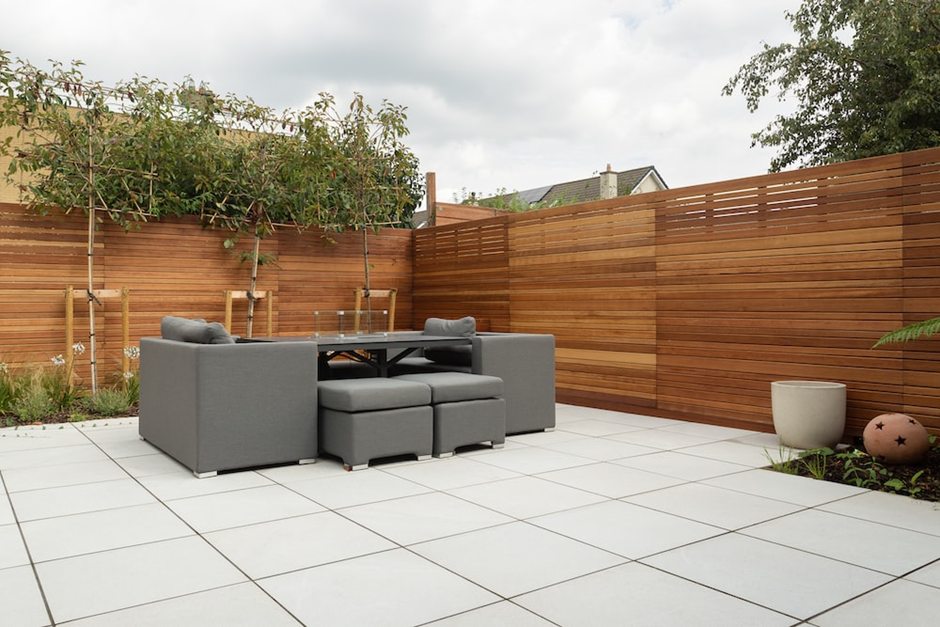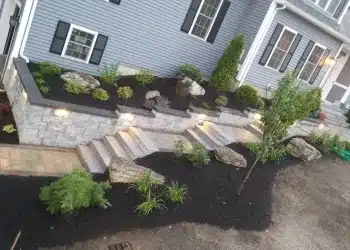Table of Contents

Choosing materials is the most important and fun aspect of planning an outdoor construction. While most people focus on the cost and appearance, you should look beyond these aspects when choosing outdoor living space materials. Ignoring some important aspects often leads to low-quality constructions, which are a disappointment. Below are a few things to consider when deciding what to use for your outdoor patio, deck, or fireplace construction.
1. Intended Use of the Space
Most of your decisions should revolve around the intended use of the outdoor space. Note that the intended use will determine its location, budget, and material preference. For instance, if you want to construct a deck around the pool, you should consider the heating and cooling properties of the material since pool users will be working barefoot around the pool.
In such a case, you should avoid plastics and metallic decking materials. Natural stone and treated wood are excellent options because of their insulating properties. However, you should source for quality wood that can withstand the wet conditions around the pool. Marine piling export should be your go-to supplier of marine lumber that’s perfect for these installations.
2. Quality of the Materials
You should choose high-quality materials for your outdoor construction. Regardless of the location of your outdoor living space in your backyard, it should withstand all of Mother Nature’s harsh elements. It should withstand the tough winter’s snow and ice, summers’ blazing sun, occasional heavy rain downpours, and strong winds that bring down tree limbs and branches.
Quality construction materials are not only durable, but also ensure that you build an outdoor living space that improves your home value. Interestingly, low-quality materials always cost more in the long run, with costs accruing from frequent replacements and maintenance needs.
3. Maintenance Requirements
You should also understand the maintenance requirements of each material before making a choice. Some materials, such as treated wood and wet-cast pavers, have delicate finishes that require sealants to maintain their appearance. Similarly, limestone varieties easily stain and should be cleaned and sealed regularly. Adhering to the material’s maintenance requirements allows you to enjoy your outdoor space all year round.
4. Local Climatic Conditions
Local climatic conditions are also a big determiner of the materials used for outdoor construction. For instance, if you live in an area that receives frequent rainfall or has high humidity, you should choose materials that can handle these conditions without easily deteriorating.
This means choosing construction materials and furniture that are weather-resistant or at least treated to withstand humid conditions. Keep in mind humid conditions are the perfect environment for mold and mildew. You should weigh the effects of weather on all materials to decide.
5. Trends
You should also evaluate the trending materials in outdoor construction. However, like cost and appearance features, trends shouldn’t be a deal breaker, as new trends easily get outdated. Nonetheless, you should look out for trending products from various manufacturers.
For instance, hardwood was mostly preferred outdoor decking material for its realistic and stylish appearance. However, the introduction of multiple timber options has changed this. Modern homeowners prefer wood-plastic composite floors to traditional timber. WPC floors are made from recycled wood and plastic, making them more durable, waterproof, and rot-resistant.
Endnote
Choosing the right material for your outdoor living space can prove daunting. The right construction and furnishing material assure quality, comfort, and durability. Some of the best materials include concrete, timber, and natural stone.






